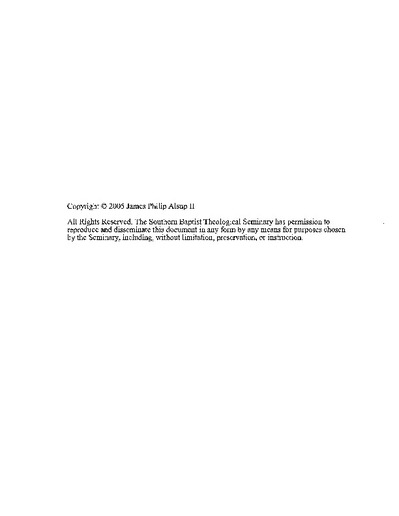| dc.description.abstract | This dissertation examined the possible influence of the M-Fuge workcamp upon a participant's desire to contribute volunteerism or future career leadership in either community service or mission service. Chapter 1 introduced the research problem and gave attention to such issues as why the church should be concerned with volunteerism.
Chapter 2 presented literature pertinent to the study. Issues such as volunteerism, theological presuppositions, servant leadership, service learning, as well as educational and leadership presuppositions were presented.
Chapter 3 presents the methodology for garnering the research data. The research questions, the design of the instrument, and topics such as population and procedures are covered. For the purposes of this study M-Fuge camps in Bolivia and Nashville were surveyed using a pre-test and a post-test Likert scale to determine if there was any shift in interest in volunteer or career desires as result of attending the camp.
Chapter 4 addresses the analysis of the findings from the research instrument. The surveys taken by event participants were scored and entered into a database. The database was used to determine levels of influence using t Stat scores compared against t Critical benchmarks. If the t Stat value was higher than the t Critical value, than the Null Hypothesis that no influence would occur was dismissed. This test was put to both first-time and multi-time participants for both the events in Nashville and Bolivia. First-time participants in Nashville and Bolivia consistently demonstrated a greater desire to participate in community service or missions volunteerism. In addition, first-time participants in both Nashville and Bolivia also demonstrated a higher degree of interest in careers in community service or missions. Multi-time participants in Nashville and Bolivia also consistently indicated an increased level of interest in volunteerism and careers in community service and missions, though not in every instance a degree high enough to dismiss the Null Hypothesis.
Chapter 5 addresses the researcher's conclusions regarding the data presented. Overall, M-Fuge demonstrates a clear ability to increase the desire of the participant's desire to become involved in either volunteerism or a career in community service or missions. The findings can be useful to churches and mission organizations interested in the role a workcamp or similar mission experiences can play in promoting missions education and action. Recommendations have been made concerning how this research can be extended for further study. | en_US |

